Odorous (willow) woodworm: description and methods of control
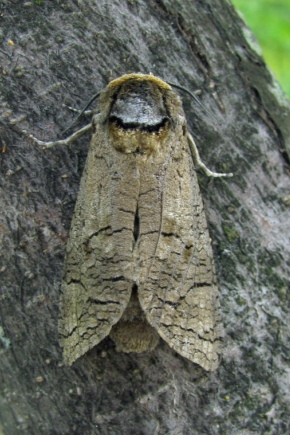
Caterpillars and butterflies of the smelly woodworm are very common in various areas. But many gardeners do not pay attention to them. This often leads to negative consequences and damage to trees.

Description
An adult willow woodworm is a large butterfly. The forewings of this insect are gray-brown in color and have a marbled pattern. The hind ones are dark brown. The abdomen of such an insect is dark gray, and the chest has a rich brown tint. The proboscis of the woodworm is short. The wingspan of the insect is 75-95 millimeters.
Males are smaller than females. There are no more visual differences between them. Females of woodworms lay eggs in heaps in cracks in the bark and on the butt of the trunks. Insects are quite fertile, so they multiply quickly. Pest eggs are elongated. They reach 1.5 mm in length. They have a gray-brown color, so they are almost invisible on the bark.
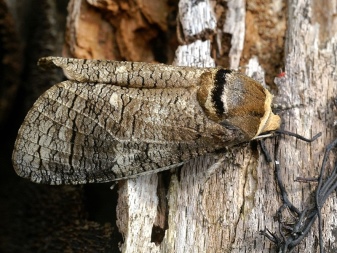
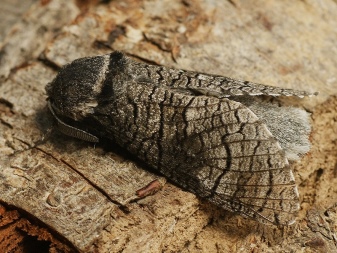
The main harm to trees is represented by carpentry caterpillars. They damage the bark by gnawing irregularly shaped passages in it. As soon as the insect hatches, it immediately begins to gnaw wood. It is quite easy to recognize caterpillars by their appearance. Their body is red-black, covered with small sparse hairs. The caterpillar's head is dark brown. With age, the body darkens, especially the dorsal part. Caterpillars can grow to impressive sizes. On the site it is quite possible to notice a specimen measuring about ten centimeters.
The odorous carpenter lives throughout Europe, the Caucasus, Western Siberia and Asia. Most often it can be found in deciduous and mixed forests. Also, these pests are attracted by hedges and green spaces that are near water. Insects are nocturnal. You can see butterflies of the fragrant woodworm in August in the evening hours. Such butterflies fly quite low above the ground. Caterpillars can also be found during the day.
They are usually kept in groups.
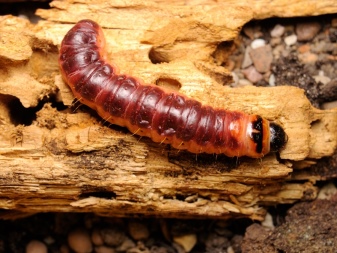
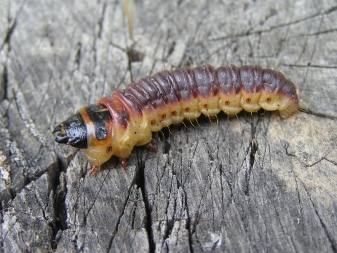
Is it poisonous or not?
Having seen the caterpillars of the smelly woodworm, many people wonder whether they are poisonous or not. It should be said right away that they cannot cause significant harm to a person. They have a rather powerful jaw, so caterpillar bites are painful. But neither young nor adult insects emit any poison.
Caterpillars significantly damage the leaves and bark of the trees they feed on. Typically, willow woodworms attack trees such as pear, plum, apple, birch, bird cherry. Plants with soft wood are most affected. You can meet bright caterpillars both in forest belts and parks, and on personal plots. Trees that grow on the edges of the forest or on separately equipped sites for this suffer most from them.
If the tree has been infested with such pests, it will slowly weaken and die.
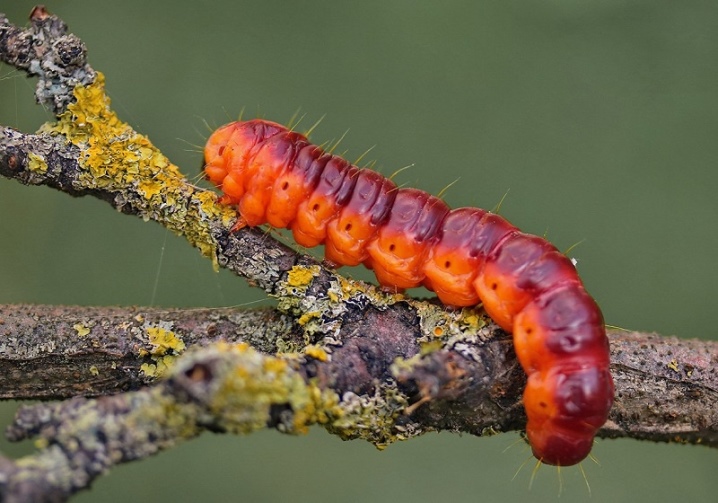
Signs of appearance
Trees affected by this insect are quite easy to identify. There are several signs of the appearance of woodworms.
- Wide oval passages appear on the trunk. The more caterpillars there are in the area, the more visible holes in the tree.
- On the surface of the bark, you can see traces of drill meal, which is poured out of holes made in it. If the passages are deep, small yellowish sawdust is visible on the tree.
- Dried bark begins to lag behind the tree. This can be seen on both old and young trees.
- A brown liquid with a pungent woody odor appears. It is due to the fact that the woodworm emits such a strong aroma, felt from afar, that they began to call it odorous. It is also worth noting that the sap with the smell of wood vinegar attracts the attention of various small insects.
You can also see caterpillars that crawl on the bark or crawl from tree to tree. Pay attention to the lower part of the trunks. After all, it is there that willow woodworms prefer to live.
Most often, these insects settle under the bark of old and weakened trees, but they can also be found in young healthy gardens.
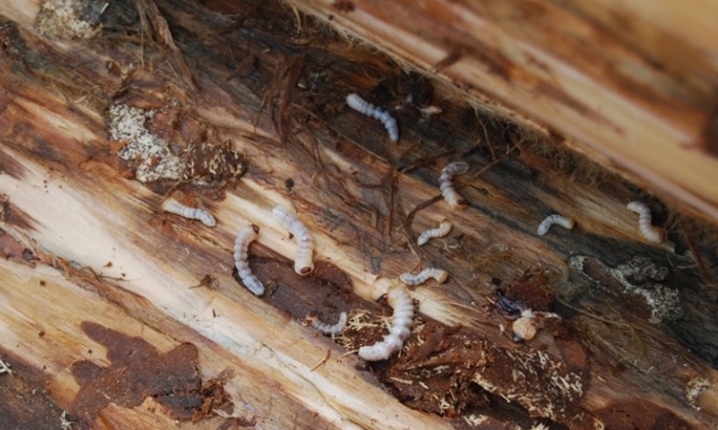
How to get rid of?
Having found an insect on your site that eats the bark of trees, you need to urgently take action. There are several ways to do this.

Mechanical
The caterpillars crawling on the tree can be collected. They are quite large, so it is not so difficult to do it. All damaged bark must also be removed from the tree. Use gloves to clean the barrel. In this case, you do not need to use plastic or metal tools, otherwise you can damage the wood. All collected bark must be burned immediately.
Areas from which the bark has been removed must be treated. To do this, use a garden pitch or a lime-based solution. It is prepared very simply. Three kilograms of slaked lime must be mixed in a bucket with 1.5 kilograms of clay. The mixture should have the consistency of thick sour cream. Such a mixture is applied to the surface very easily.
Since some of the caterpillars can hide under the bark in pre-made passages, the garden plot must be periodically inspected and manually collected the caterpillars that appear there.
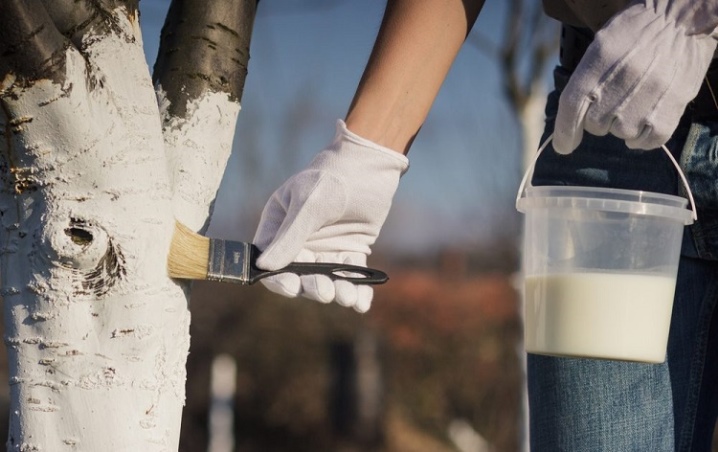
Chemical
Many gardeners prefer to use chemicals for trees. They can be treated with insecticides such as Diazinon, Chlorpyrifos, Actellic or Chlorophos. To cope with insects, you need to dilute the product as indicated in the instructions. After that, a small cotton ball must be soaked in this solution and placed in the hole made by the caterpillars. In some cases, the solution is injected into the burrow using a conventional syringe.
Also, trees can be simply sprayed. This procedure should be carried out in the summer. It is best to do this in the evening, in calm and calm weather. When working with poisons, you should always take care of your own safety and wear protective clothing and a respirator.
If there are a lot of caterpillars, this task can be entrusted to professionals who will quickly process the entire garden.
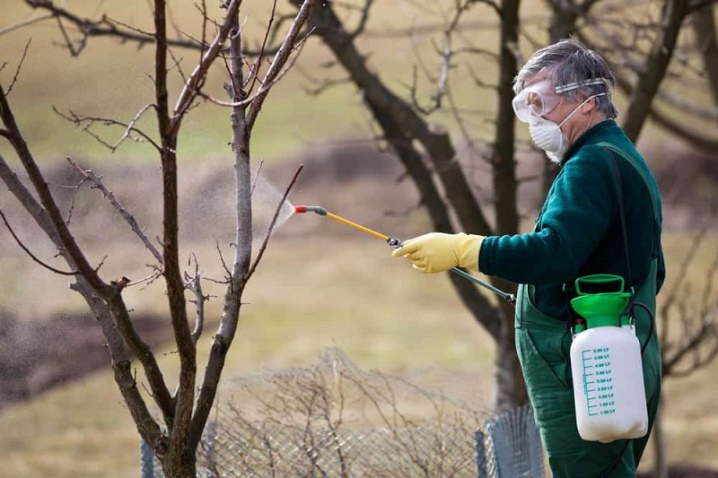
Biological
You can also attract natural enemies of caterpillars - birds to your site. Rooks, magpies, woodpeckers, tits and other birds can help in the fight against insects. In order for them to fly to the selected area, you need to hang feeders and drinkers there. Birds will help to cope not only with woodworm caterpillars, but also with other insects.
If the tree is heavily infected and there is no way to get rid of the caterpillars, it should be cut down. Otherwise, insects will creep over the site and harm more than one plant, but the entire garden.

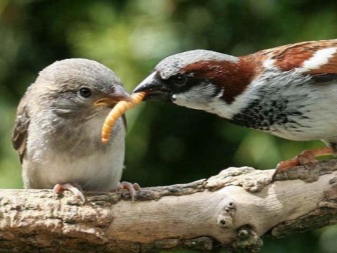
Prevention measures
To prevent caterpillars from parasitizing on the site, you need to monitor your garden. In autumn, the area should be cleared of fallen leaves. If the trees there have been infested with woodworms, the foliage should be burned. The soil in the near-trunk circle must be dug up. For prevention, trees should be regularly inspected and cleaned of old cracked bark. It can be removed quite easily. After treating the trees, the trunks must be lubricated with useful mixtures. These are the following compositions.
- Clay diluted with lime in a ratio of 2 to 1.
- Clay mixture with insecticides. The product is prepared very simply. Clay is diluted with water, then wood or casein glue is added there, as well as 90 grams of ten percent karbofos.
- A mixture of clay and mullein. Trees should be prepared in this way at the end of spring.
Trees should always be processed in dry weather. This procedure should be carried out at least twice during the entire season.The optimal time for processing is late autumn and early spring. You need to coat the lower part of the trunk, the layer of the mixture should be dense. In this case, the tree must be thoroughly cleaned of moss and old bark.
Willow woodworms appear in the garden quite often. You can cope with such pests only if you regularly inspect the site and take the necessary measures to combat them.

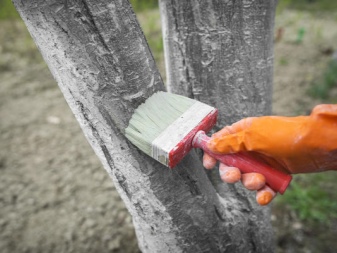













Thanks! Interesting article. I read it with pleasure.
Thanks. Interesting!
The comment was sent successfully.